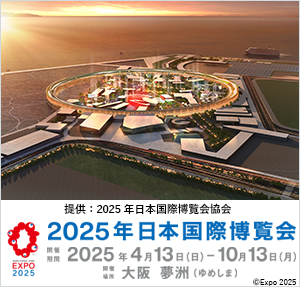Minister of Science and Technology Wang Zhigang streesed in a press conference held by the CPC Central Committee
Minister of Science and Technology Wang Zhigang streesed in a press conference held by the CPC Central Committee: S&T self-reliance and self-strengthening promote high-level international cooperation
PR86703
BEIJING, Nov. 18, 2020 /PRNewswire=KYODO JBN/ --
A report from Science and Technology Daily:
"Hold the core status of innovation in China's overall modernization drive and
adopt S&T self-reliance and self-strengthening as the strategic pillar of
national development..."
For the past few days, the new ideas about science and technology (S&T) from
The Fifth Plenary Session of the 19th Communist Party of China Central
Committee (CPCCC) have lightened up quite a few S&T people. Why innovation is
emphasized in the current stage? What measures is China to take in order to
realize S&T self-reliance and self-strengthening and to promote S&T innovation?
On October 30th, the CPCCC held a press conference regarding the ideas proposed
in The Fifth Plenary Session of the 19th CPCCC, Wang Zhigang, General Secretary
of the Party Group of Ministry of Science and Technology and Minister of
Science and Technology, gave his answer, "scientific and technological innovation
has always played an important role in national development and human progress,
and its role is becoming increasingly prominent and ever more important."
"China has entered a new phase of development, which needs a new idea and a new
pattern of development to be established," said Wang. The CPC Central
Committee's proposals for formulating the 14th Five-Year Plan (2021-2025) for
National Economic and Social Development and the Long-Range Objectives Through
the Year 2035 were adopted at the fifth plenary session. The proposals suggest
to hold the core status of innovation in China's overall modernization drive,
regard self-reliance and self-strengthening in science and technology (S&T) as
the pillars of national development strategy and place it at the top of all
planning tasks with specific arrangements.
It is not only the first time that the CPC has done so in the history of
formulating a five-year plan, but also a strategic layout made by the CPCCC
with Xi Jinping as the core based on the current trend of development of the
world and outlook for the future.
According to Wang, it is worth noting that the CPCCC has made the strategic
policies and arrangements concerning S&T innovation continuously and kept up
with the times, since the 18th CPCCC proposed the strategy of innovation
driving development, the 19th CPCCC proposed that innovation is the first power
to lead development and The Fifth Plenary Session of the 19th CPCCC proposed
to accelerate the construction of a S&T-strengthened country.
"The important positioning and arrangements regarding scientific and
technological innovation put forward at the fifth plenary session are based on
the long-term theoretical innovation and practical development and the idea of
seeking truth from facts insisted by the CPC. They have fully grasped the trend
of global S&T development, and adhered to the path of independent innovation
with Chinese characteristics. They also fit the characteristics and tasks of
S&T innovation in the country in the new era," Wang commented.
He also noted that those important positioning and arrangements need to fully
play S&T innovation's role as the key variable in the once-in-a-hundred-year
change and as the pillar and leading part of the great rejuvenation strategy.
Faced with the new changes happened both within and outside the country, China
needs sci-tech innovation solutions more than ever in implementing the new
development philosophy, promoting quality development and building a new
development pattern, he said.
China's scientific and technological strength is now moving from seeking
accumulation in quantitative terms to taking great leaps forward in quality,
from individual breakthroughs to achieving systematic progress, laying a solid
foundation for economic growth and improvement of people's livelihood and
national security.
Wang pointed that looking ahead, we need to enhance our confidence in
innovation and seize the great opportunity of a new round of S&T revolution and
industrial transformation. Facing the front line of world S&T, the main
battlefield of economy, the great need of our country and the health and life
of our people, we need to stick to the functioning of "double engine", namely
S&T innovation and institution innovation, and build national strategic S&T
strength to improve the ability of institutionalized tackling of S&T challenges
and emergency.
In addition, we need to plan for the tackling of basic research and key
technologies and establish a systematic, comprehensive and efficient national
S&T innovation system in order to stimulate the enthusiasm and creativity of
people in S&T sector and innovation entities.
China will move faster on the new path of innovative development featuring
excellent talents, cutting-edge technologies, outstanding industries and a
strong economy and nation, and strive to become one of the leading
innovation-oriented countries and a scientific and technological power in the
world, Wang explained.
"The self-reliance and self-strengthening in S&T are also in line with the
self-reliance and independent innovation that we have always attached great
importance to, which do not contradict openness and cooperation; instead, they
form a dialectical unity," Wang stressed.
Open for cooperation is what the self-innovation path with Chinese
characteristics is supposed to lead to whereas self-reliance and
self-strengthening are the premise and basis for it to be realized in a
mutually equal and respected manner.
"The innovation that China seeks is open innovation. China's S&T innovation has
never been, and will never be, conducted behind closed doors," Wang said. For
more than 40 years, openness, cooperation, exchanges and mutual learning have
been playing important roles in promoting China's scientific and technological
innovation. We have always emphasized that we should make scientific and
technological innovation plans with a global perspective and actively integrate
ourselves into the global innovation network.
At present, China cannot pursue innovation and development in isolation from
the world, and the world needs China for global scientific and technological
progress. China needs to improve its ability of independent innovation and run
its own affairs well, while hoping to learn more advanced experiences from the
rest of the world and contribute more Chinese wisdom to tackle global
challenges, he stressed.
"Looking ahead, China will make greater strides in S&T opening-up and
cooperation. We are ready to carry out dialogue and exchanges with other
countries in regard to S&T policies, development plans, research ethics, and
fields of common concern in S&T as well as innovation." In addition, China will
seek common ground while reserving differences in opening up and cooperation
and strive to reach more consensus on international science and technology
governance.
At the same time, China will focus on global issues such as climate change,
energy and resources, and public health, and set up a scientific research fund
to support joint research with countries across the world.
In addition, great efforts will be made to further improve the legal and policy
environment for S&T innovation in China, strengthen the protection of
intellectual property rights, provide equal opportunities and convenient
conditions for overseas talents to work and start businesses in China, and make
the country a favorable destination for global innovators and entrepreneurs.
SOURCE Science and Technology Daily
本プレスリリースは発表元が入力した原稿をそのまま掲載しております。また、プレスリリースへのお問い合わせは発表元に直接お願いいたします。
このプレスリリースには、報道機関向けの情報があります。
プレス会員登録を行うと、広報担当者の連絡先や、イベント・記者会見の情報など、報道機関だけに公開する情報が閲覧できるようになります。










